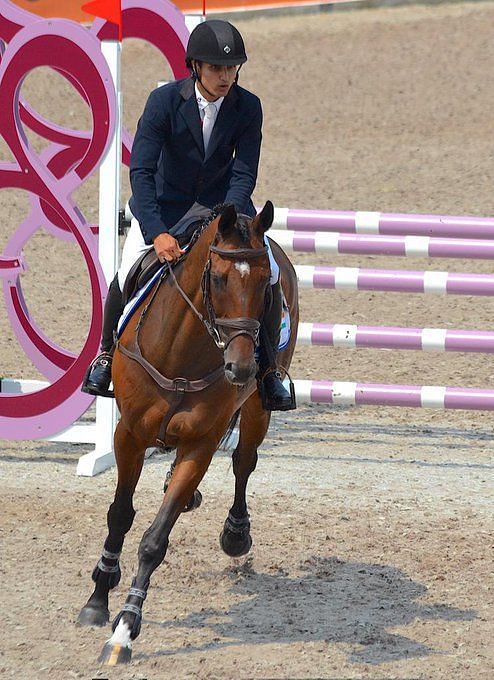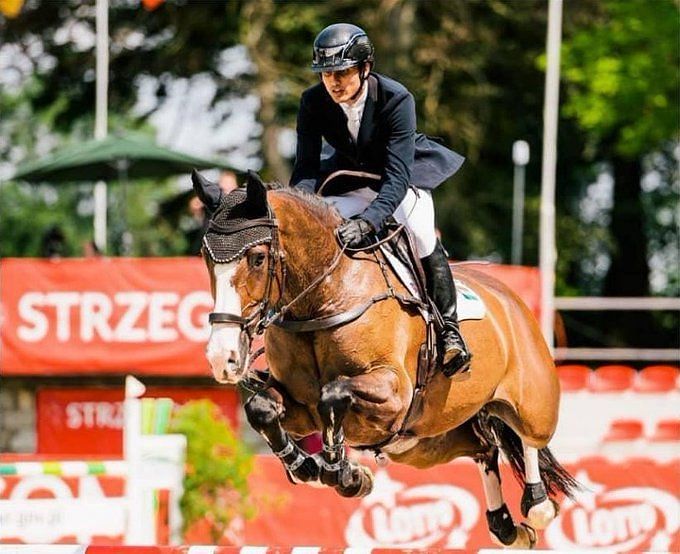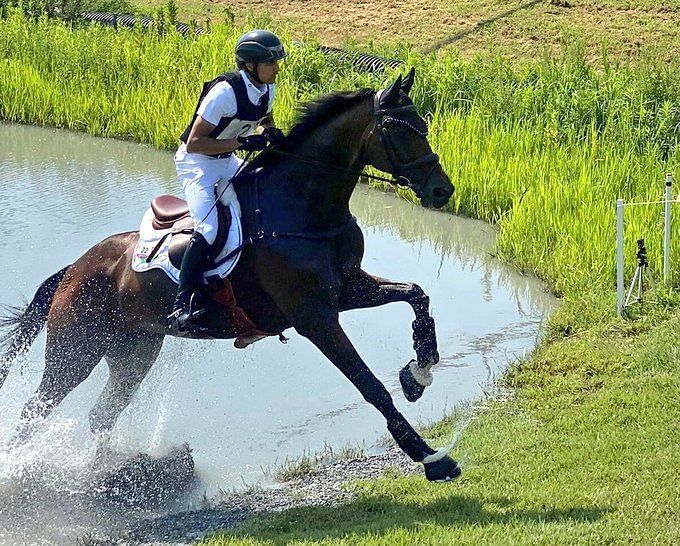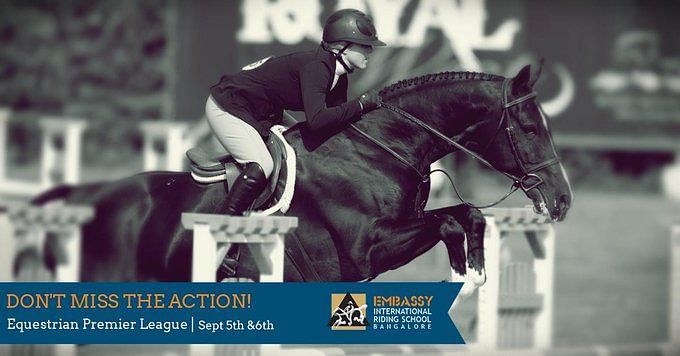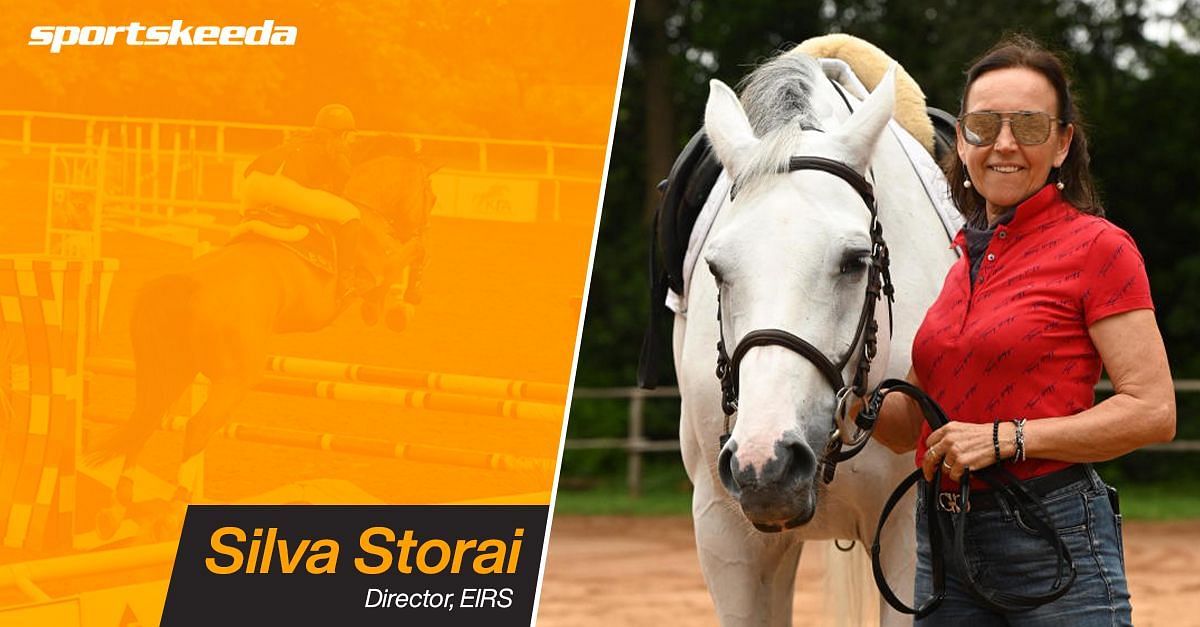
"Equestrian in India still needs the support of federations at the level cricket and hockey gets" - Silva Storai, director, Embassy International Riding School
While it may not be largely popular or extensively practiced in India, equestrianism has begun gaining ground in the country as a niche sport. As a result of Fouad Mirza's achievements at the Tokyo Olympics in 2021, the sport has also attracted a lot of attention. He was the third equestrian from India to earn a spot at the Olympics, putting an end to India's two-decade wait for representation in the sport at the Summer Games.
India's only professional female jockey, Silva Storai, runs the Embassy International Riding School (EIRS), which is credited with popularizing equestrian sports in India, and also serves as its director. She is also the only female jockey in the world to have won two Derbies.
Storai has been in charge of the Embassy International Riding School for over 20 years and has produced numerous champions in the sport. She began practicing the sport at the age of 13, and throughout her lengthy and successful career, has witnessed the sport expand tremendously.
Storai joined Sportskeeda for a chat about her journey, EIRS, and equestrian sports scene in India
Storai first came to India in the 1980s as a teenager with a fondness for horses. Speaking about how her love for horses expanded into a passion for equestrianism, Silva said:
“I was drawn more towards horses than equestrian. At a young age I knew I love horses. The passion for equestrian and setting up this fantastic facility (EIRS) only came after I met Jitu Virwani. In 1996 he had just bought the Embassy Riding School ground and our journey started since.”
The growth of the sport in India has been a slow process. The system and the infrastructure have taken coherent shape in the last few decades. Storai has been a part of that structure, helping mold it since the early 90s. Speaking about the development, she said:
“There was no structure back then in terms of what do you were, how do you train, how do you feed the horses. Only the army riders were able to compete nationally. When we started our school our stress was on being professional and reaching international standards.”
There is still a long way to go, according to Storai, as equestrianism is still an unknown sport to many. The country requires more academies, better training, and attention to what horses should be used for. Generally, children who train abroad have a higher capacity to compete in the Asian Games and Olympics as the standards of these games have grown in the last 20 years. “But I see great potential in India,” Storai mentioned, “there are many good things to come.”
She added that equestrian sports in India still need the support of federations at the same level as cricket and hockey. “There needs to be a huge upshift. Federations are still operating in an old-fashioned manner. But there is a resurgence in the way the public wants to play sports and move forward. India needs at least 4-5 arenas apart from EIRS to provide sufficient opportunities to everyone.”
Speaking about the evolution of Embassy International Riding School in since 1996, Silva said:
“Initially we didn’t think about the international levels. For the first 3-4 years we just wanted to raise Indian standards. Then we had the idea of going abroad and getting horses. In 2006 we went for the first time to get warm-blooded horses. Earlier we used to have thoroughbred horses. Their purpose was to race, not to jump and perform different movements for dressage. In few years we got 15-16 horses.”
Fouaad Mirza, the 2018 Jakarta Asian Games medalist, was the first Indian athlete to qualify for equestrian sports at the 2020 Tokyo Olympics after almost two decades and is supported by the Embassy International Riding School in Bengaluru. Meanwhile, Ashish Limaye, who is also associated with EIRS, has qualified for the next Asian Games in Hangzhou.
Elaborating on the kind of training and facilities that are provided to young riders at EIRS, Silva said:
“We have a program that is designed to enable riders to reach international standard and improve quicker. We have set guidelines on what a rider needs to achieve to reach the next level. Many kids enter the sport just because it is fun to ride a horse. But there are many factors that need to be satisfied to reach a certain level. Parents can sometimes have set goals which can interfere in the development of children.”
The Embassy International Riding School hosts the Equestrian Premier League, a dressage and jumping competition series. With the end goal of making riders internationally competitive in equestrian sports, the tournament that started a decade ago aims to raise the equestrian standards in India while providing riders with a platform to improve their fitness and confidence levels. Speaking about the tournament, Silva Storai added:
“The main idea is to have a tournament which runs for six months. Three days of intense competition every month, starting in June and ending in December. And this has never happened anywhere before in the country. We provide facilities and training program over the duration and this is taking us to a completely different level.”
Top talent is drawn to EIRS from around the nation. Along with many other qualities that have made it the top choice for aspiring equestrians, the school also offers best-in-class facilities, training programs that adhere to British Horse Society standards, well-bred horses, and an international jumping arena.
By graduating some of the best riders in the nation, EIRS is rewriting India's equestrian history. The school has grown to be the best equestrian academy in India today, helping Indian riders pursue opportunities on the international stage and even sending one of our riders, Fouad Mirza, to the Olympics. The institute has coaches from both India and abroad and began breeding horses in 2015, making sure that the future of the sport stays bright in the country.

